8.8 /10 1 Votes
| 4.4/5 Let's Play SEGA Cabinet Upright Initial release date 14 June 1987 | |||||||||||||||||||||||||||||||||
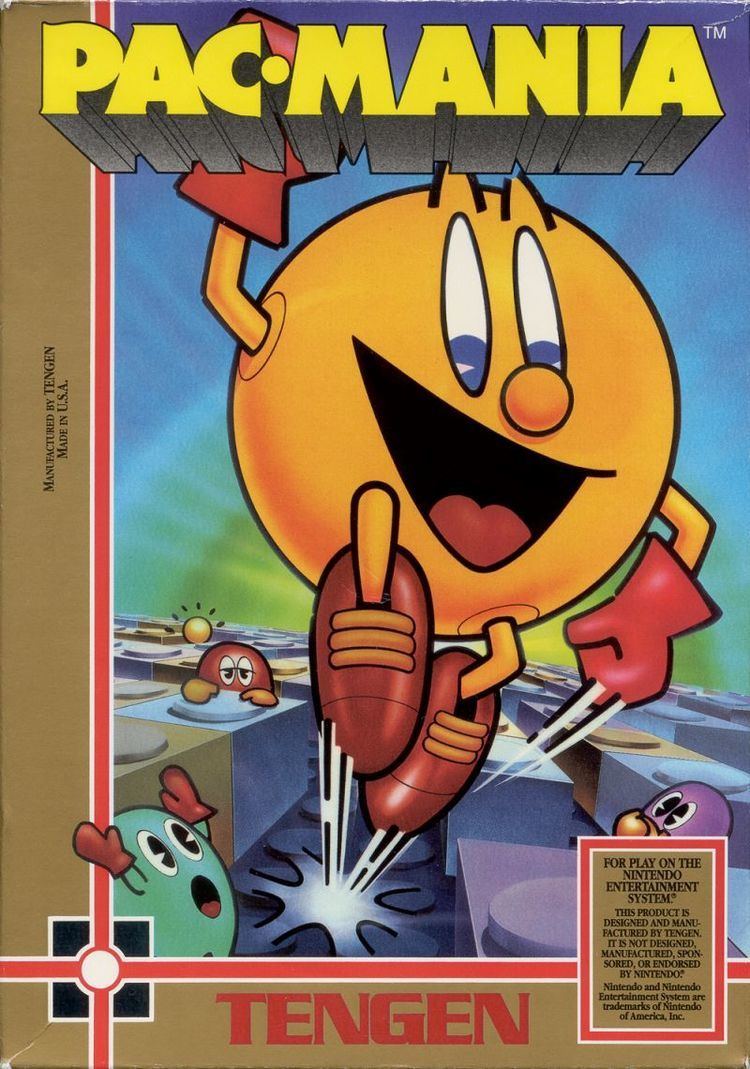 | ||||||||||||||||||||||||||||||||||
Composer(s) Yuriko KeinoYoshito TomuroJunko Ozawa Mode(s) Up to 2 players, alternating turns CPU 2x Motorola M6809 @ 2.048 MHz,1x Motorola M6809 @ 1.536 MHz,1x Hitachi HD63701 @ 1.536 MHz Similar Pac-Man games, Namco games, Maze games | ||||||||||||||||||||||||||||||||||
Pac mania arcade 1987 video game years history
Pac-Mania (パックマニア, Pakku-Mania) is an arcade video game in the Pac-Man series, released by Namco in 1987 (and distributed by Atari Games in the United States and Europe). It runs on Namco System 1 hardware and was the last arcade title in the Pac-Man series until 1996. It is a pseudo-3D interpretation of the classic maze game genre using an oblique view and features many of the elements from the original 1980 Pac-Man arcade game, as well as several new features.
Contents
- Pac mania arcade 1987 video game years history
- Pac mania
- Gameplay
- Differences from Pac Man
- Reception and legacy
- Home conversions
- References
Pac mania
Gameplay
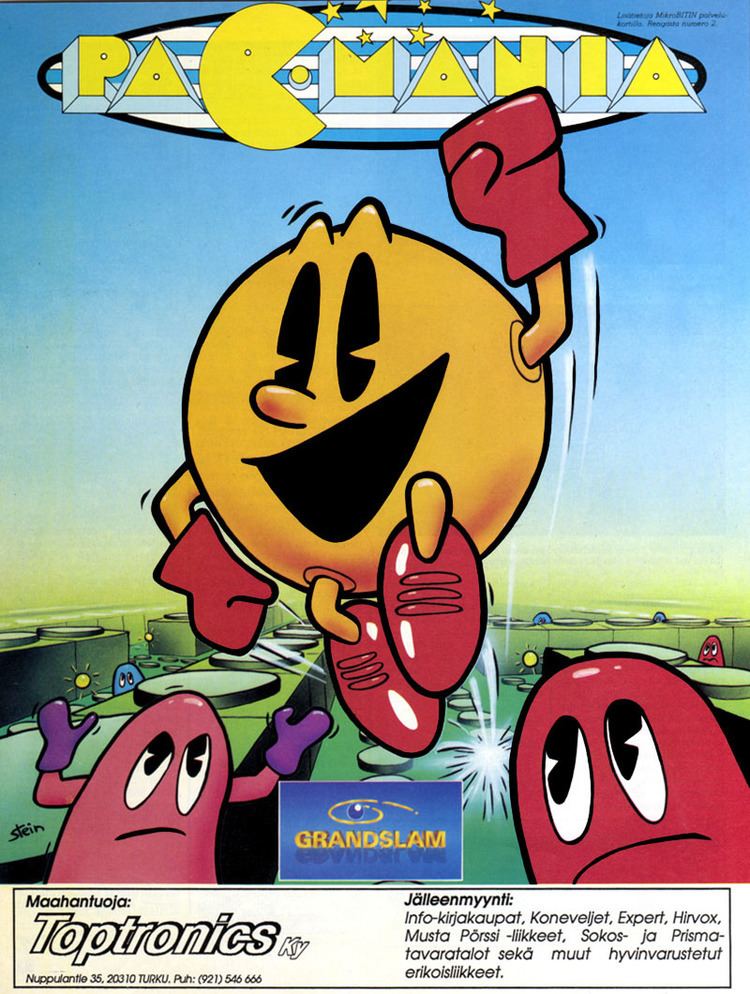
As in Pac-Man, the objective of Pac-Mania is to score as many points as possible. The player controls Pac-Man and attempts to eat all the pellets in a maze, while avoiding being caught by the ghosts who chase him around it. The player can eat power pellets that cause the ghosts to turn dark blue and become vulnerable; the player can then go to eat the ghosts for extra points, sending them back to their regenerator to return to their original colour and behaviour.
Differences from Pac-Man
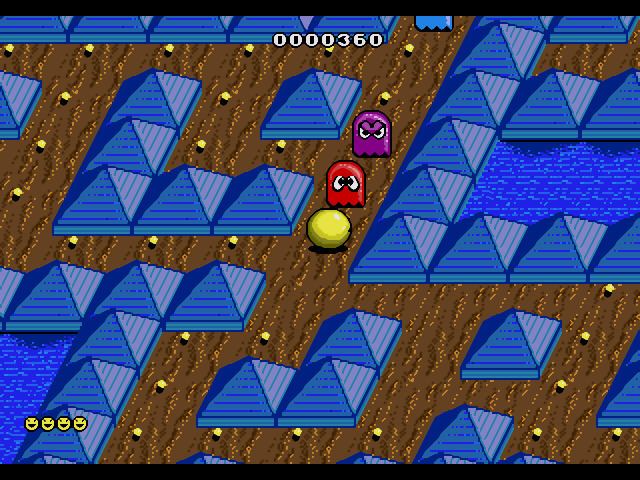
Pac-Mania contains several new features and significant differences from its original counterpart. The most noticeable change was the view used in cabinet projection, an oblique pseudo-3D format, in which Pac-Man always occupied the center of the screen (and a virtual camera moves around the round to follow him). In addition, the player can press a button to cause Pac-Man to jump, allowing him to evade most ghosts by jumping over them. However, Pac-Man cannot as easily jump over the two new green and gray ghosts because they will jump whenever the player presses the jump button; in fact, he can't jump over the gray one at all.
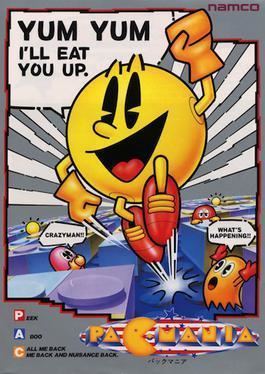
The ghosts include the returning Blinky, Pinky, Inky and Clyde from the original Pac-Man, and Sue (from Ms. Pac-Man and Pac-Land) who is now purple instead of orange. Unlike her original appearance (where she was a replacement of Clyde), she now homes in on Pac-Man's direction and will follow him around. There are two new ghosts (green and steel gray) that bounce whenever Pac-Man bounces. (It is hinted in the game's intermissions that the names of the two new ghosts are "Funky" and "Spunky", or "Common" and "Gray Common" in the Japanese version, though this is never made completely clear). In later rounds, up to nine ghosts can be present in a single round. Also, bonus objects in this game not only include traditional point-scoring fruits, but also power-up items which can have random effects, such as doubling the point values of ghosts (until death) or causing Pac-Man to move much faster than normal (until a power pellet wears off).
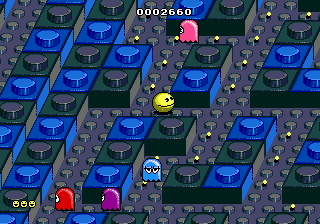
The game takes place in four environments: Block Town (made up of Lego-like building blocks), Pac-Man's Park (an oblique version of the original Pac-Man maze), Sandbox Land (walls are made up from pyramids), and Jungly Steps (appearing as pathways with no railings, resembling a set of steps that rise up toward the back of the maze). There is also a "secret" maze in the Sega Master System version, which can be reached by eating all the regular pellets on the first round, then eating the special item that appears in the centre of the maze. The game has a limited number of rounds, after which the player is shown a brief ending and production credits, and is prompted for his/her initials if he/she has placed on the high score table. The number of rounds varies by version (23 in the Japanese, 19 in the US). DIP switches in the game can be set to make the game endless, repeating its last six rounds forever until the player loses all of his/her remaining lives.
Reception and legacy
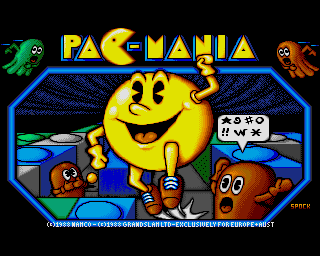
The game was converted to most of the popular home formats of the time. These versions of the game were generally well received, especially on the 8-bit systems. The game was runner-up in the category of Best Coin-Op Conversion of the Year at the Golden Joystick Awards, behind Operation Wolf.
Home conversions
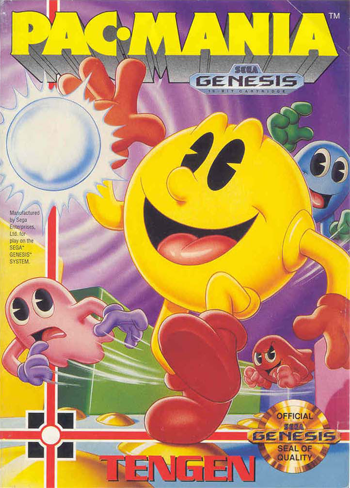
Pac-Mania was ported to the Nintendo Entertainment System in 1990, and the Sega Genesis/Mega Drive in 1991 by Tengen, with the NES version being unlicensed. Neither port was released in Japan. The arcade version of Pac-Mania appeared in Namco Museum Volume 5, the 2001 Namco Museum release, Namco Museum 50th Anniversary and Namco Museum Virtual Arcade. In 2001, it was one of the games included in Pac-Man Collection for the Game Boy Advance. Later, in 2002, the arcade version was re-released and included as an unlockable in Pac-Man World 2. In 2007, Pac-Mania was also released in Namco Museum Remix with Pac & Pal, Pac 'n Roll, Super Pac-Man and other non-Pac-Man games and was re-released in 2010 as part of the follow-up compilation Namco Museum Megamix, along with 17 other Namco arcade games and six remix games, five of which appeared in Namco Museum Remix. In 2010, the design of Pac-Man and the ghosts from Pac-Mania appear in Pac-Man Championship Edition DX and the game itself is released as an app in the App Store for iOS devices. Pac-Mania was also re-released as part of the Pac-Man's Arcade Party arcade machine in 2010 for Pac-Man's 30th anniversary. In February 2014 it was included in the Pac-Man Museum on the PlayStation 3, Xbox 360 and Windows PC Via Steam.
The music from Pac-Man's Park was later used in Pac-Man and the Ghostly Adventures as the "power up" theme for "Pac" (the show's version of Pac-Man). The same theme, along with Block Town's music would be remixed and used in Super Smash Bros. for Nintendo 3DS and Wii U.
